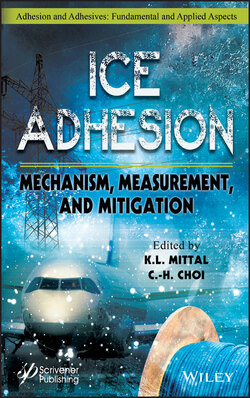Читать книгу Ice Adhesion - Группа авторов - Страница 41
2.3 Prospects
ОглавлениеDespite significant improvements in experimental techniques over the past years, it remains challenging to characterize and control the nucleation dynamics of water and ice in an accurate manner. The recent improvements in simulation methods provide complementary approaches to study the water nucleation process in various idealized environments. It enriches our understanding of the kinetic evolution of nucleating embryos, as well as their volume and interfacial structures. However, the limited computational domain and timescale greatly restrict the application of simulations for real systems. We believe many opportunities exist for the further experimental exploration of nucleation at the very beginning stage by using higher resolution or three-dimensional viewing techniques (e.g., surface plasmons, confocal microscopy, etc.). New findings of nucleus properties and interfacial phenomena will lead to new approaches to control the nucleation process on solid surfaces, not only for water but also for other low surface tension liquids.
Figure 2.11 Critical droplet freezing radius as a function of the substrate temperature. The droplet freezing induced by frost propagation is excluded from the experimental statistics due to the different ice nucleation mechanism (Tsat = 298.05 ± 0.5 K). Figure is reprinted with permission from [67].
As mentioned above, the recent study of nanoengineered surfaces with hybrid wetting features suggests an increased interest in the spatial control of droplet condensation for anti-freezing. However, a long-term manipulation of droplet and ice nucleation has proven to be exceedingly difficult. Since the continuous phase change of water involves the nucleation at nanoscale and liquid transport at macroscale, new work in this area should emphasize attaining an optimized surface topography which can improve nucleation and water transport simultaneously. Although the current implementation of surface structures and chemistries encounters a number of degradation issues, fundamental studies of key interfacial phenomena should lead to a significant improvement in the condensation and anti-icing performance and might pave the way for long term durability.
